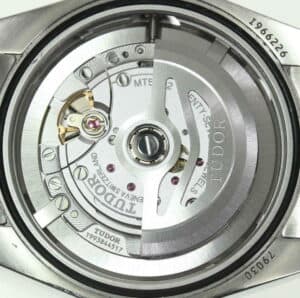Want to know the different Parts Of A Watch are?
Then this full guide will help you learn about the various sections of a watch.
You have probably spent quite a fortune on your watches and have some really iconic timepieces in your collections.
The thing is, having a beautiful timepiece you love is something you should be proud of.
Unfortunately, not knowing a thing or two about the watch on your wrist can be pretty embarrassing.
The truth is many watch owners know little to nothing about their timepieces, especially what parts they have.
And if this sounds exactly like you, we have you covered.
In today’s post, we will run you through everything you need to know about watch parts and more.
From the main components of a watch to all of the not-so-important ones, today’s watch guide will bring you up to speed on everything about watch components.
Read on as we delve deeper.
The major parts of a watch: Addressing the elephant in the room
As we mentioned earlier, we have the main components of a watch and the not-so-important ones.
Read on to find our list of the most important watch components.
The Case
This watch part houses the inner working parts of the watch, including the dial and other vital components.
And depending on the type of watch, the case is usually crafted from stainless steel.
Because this case is carefully designed to keep the dial and other inner components in place, it is always nicely screwed down to the side of the dial.
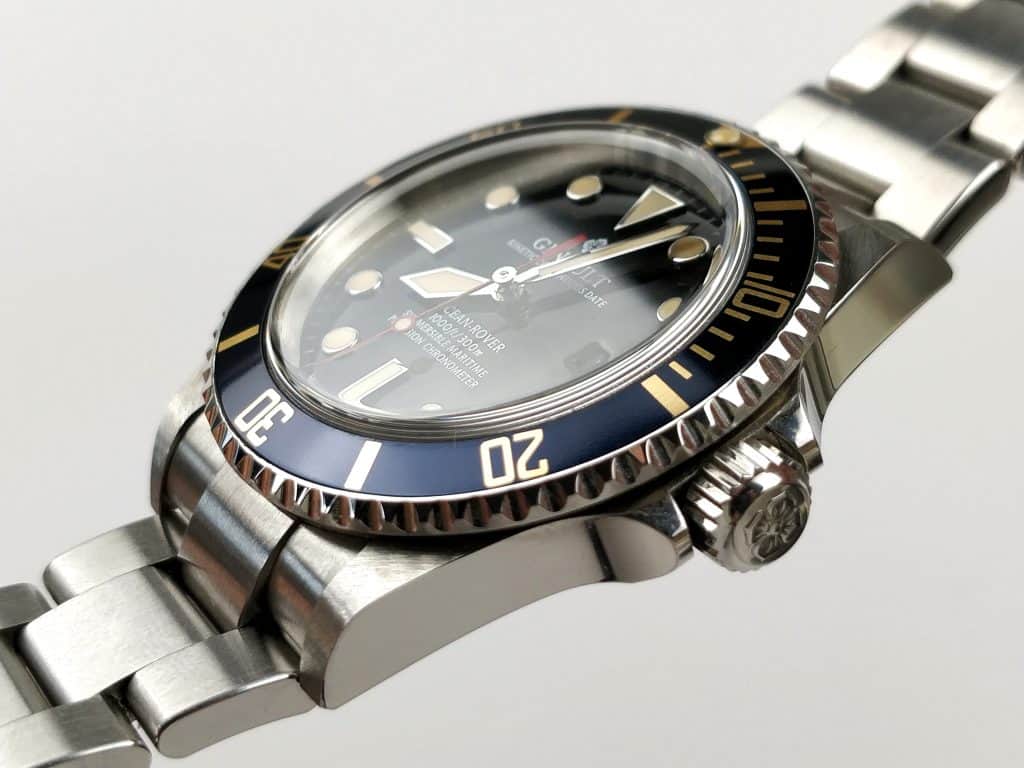
While most watch casings are usually made from stainless steel, other watch cases are built from different materials like gold and titanium.
The only reason why stainless steel is a popular option is that it is a lot cheaper, lightweight, and easier to access.
The type of material used to make a watch case is essential because if you accidentally drop your watch, the case will be the first part of your watch to be bumped or smashed.
Some manufacturers tend to add some kind of finishing to their watch cases; that’s why you’ll sometimes find some cases buffed down, polished, or even with a matte coat.
Bracelet, Band, Strap
Sure, you may already know what a watch buckle or bracelet is, but since we are looking at the critical parts of a watch, it’s only normal to include it in our guide.
The watch strap, bracelet, or buckle is an essential component of a watch that attaches the device to your wrist.
Except, of course, what you have is a pocket watch; every wristwatch we have come across has some type of bracelet or strap.
And just so you know, straps and bracelets can be made from different types of materials.
More so, they come in all sorts of thicknesses.
Also, different timepieces come with different types of bracelets and straps.
For the most part, most dress watches feature stainless steel bracelets, and that’s because these types of watches have a high-end polished finish.
Most high-grade watches tend to feature a strap that is made from leather.
Another thing you should keep in mind is that the materials a watch strap is made from depend significantly on its functionality.
And you’ll learn why soon.
If you are interested in a dive watch, you’ll most likely notice that the watch features a rubber or polyurethane-based strap.
This isn’t surprising, giving that the timepiece is built for extreme performance, including deep under the ocean.
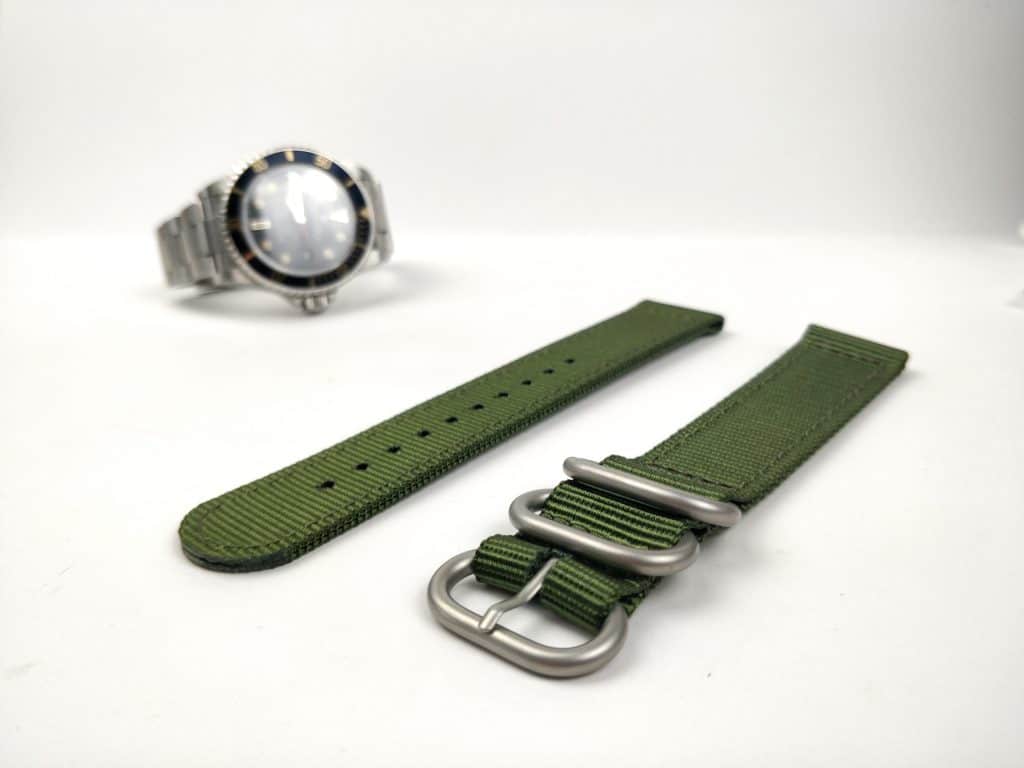
Watch strap materials
Like we mentioned earlier, a watch strap can be made from different types of materials.
On the one hand, leather straps can be made from calfskin, lizard skin to more exotic materials like crocodile, ostrich, alligator, or even toad skin.
On the other hand, metal bracelets are also a popular option, especially among premium quality watches.
Other options like satin straps, nylon straps, and rubber straps are increasingly showing up on many conventional watches today.
When it comes to watch straps or bracelets, we like that many watch brands are making their watches and straps interchangeable.
With this option, users can play around with how they want to step out.
Watch buckle and clasp.
The buckle or clasp is a unique mechanism that usually comes with a strap/bracelet.
This mechanism ensures that the strap or bracelet stays in place.
And as you’d imagine, there are plenty of types of buckles on the market today.
While a brand will go for a particular type of buckle for specific reasons, you’ll more or less find a jeweled clasp on a high-end dress watch.
The Crown
Many watch owners don’t like the crown of their timepieces, and that’s because this watch component tends to dig into your hand most of the time.
But regardless of how much you find your watch crown annoying, it is an integral watch component you can’t do without.
For those who have no idea, the crown is the rotating disk that is fitted on the 3 o’clock position of your device.
Unlike other watch components, this little chicky component is more prominent than other buttons, especially on the outer part of the watch.
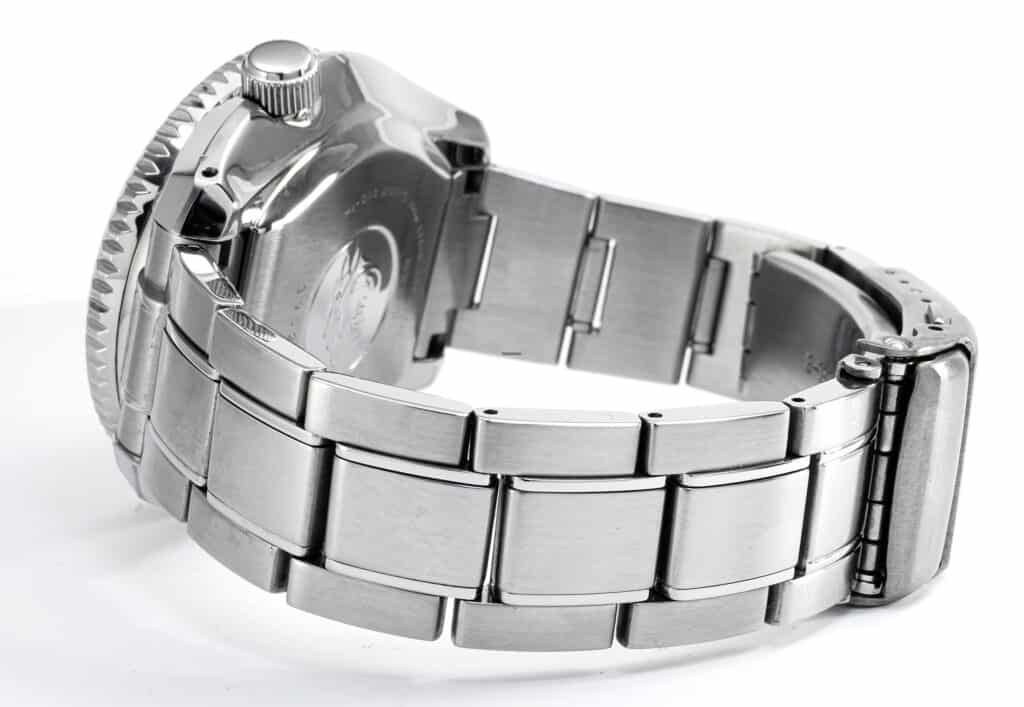
The crown of a watch is an integral part of a watch as it helps users adjust their time.
Although if you have an automatic or mechanical watch, you may not need to wind the crown now and then, and that’s because most automatic watches come with a self-winding crown.
And in case you don’t know what a self-winder is, you’ll learn about it in a bit.
A mechanical or automatic watch is designed to move with you.
And since this type of watch isn’t powered by a battery but rather depends on the kinetic energy you produce to keep working effortlessly, you’ll need to wear it pretty often to keep the watch functioning optimally.
That said, you may forget to wear your watch for some time, forcing it to run out of power.
This can impact the accuracy of your watch significantly; as such, it needs to be wound.
This winding action helps to tighten the gears and spring.
This is exactly what your watch crown does.
Watch glass/window
The watch glass or window is that component of a wristwatch that allows you to glance at the watch’s display.
The window is made from different types of glass.
And this glass comes in different qualities, depending on the price of the timepiece.
Unlike other watch components, the glass needs to be sophisticated and sturdy; otherwise, it may end up pretty scuffed up.
This explains why a lot of experience watch wearers would instead go for a timepiece with a Sapphire display, mainly because Sapphire displays are regarded as the toughest watch displays out there.
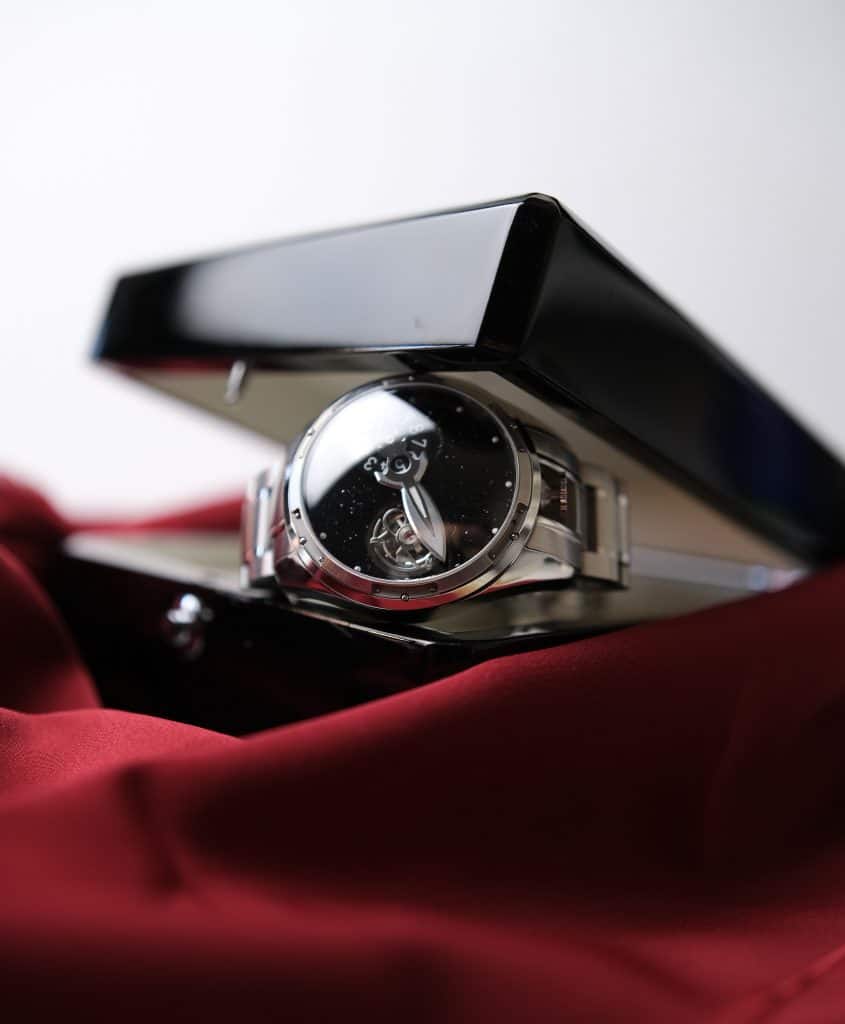
Besides Sapphire, which is perhaps the most famous watch display out there, other materials like Hardlex Crystal are also used for watch displays.
The only issue is that these minerals are not genuine minerals but synthetic versions.
Some popular watch brands like the Seiko brand use their signature mineral, which is quite tougher than most minerals.
Like your typical watch strap/bracelet, your watch’s window can also be modified.
Lugs
Even though your watch’s log may not be as important as other components we have highlighted above, it is still important we go over the details of this chunky component.
For starters, the lug of any watch is that part of the timepiece that connects the display to the bracelet or strap.
If you take a quick look at your unit, you can tell that the lug is the four pieces of stainless steel metal that sit on each corner of the display.
The lug connects the dial to the strap through specially designed holes, where a screw passes through.
While the lugs of a watch can be made from various materials, most lugs are made exclusively from stainless steel.
Bezel
Between your watch’s dial and the lugs sits the bezel.
Typically, the bezel is the outermost ring of the dial.
It is fitted just after the case.
Unlike the watch’s case, which is a little compact, the watch dial is pretty broad.
Many people like to think of the bezel as just a decorative component, but we beg to differ.
The scales you see on the bezel aren’t there for aesthetics.
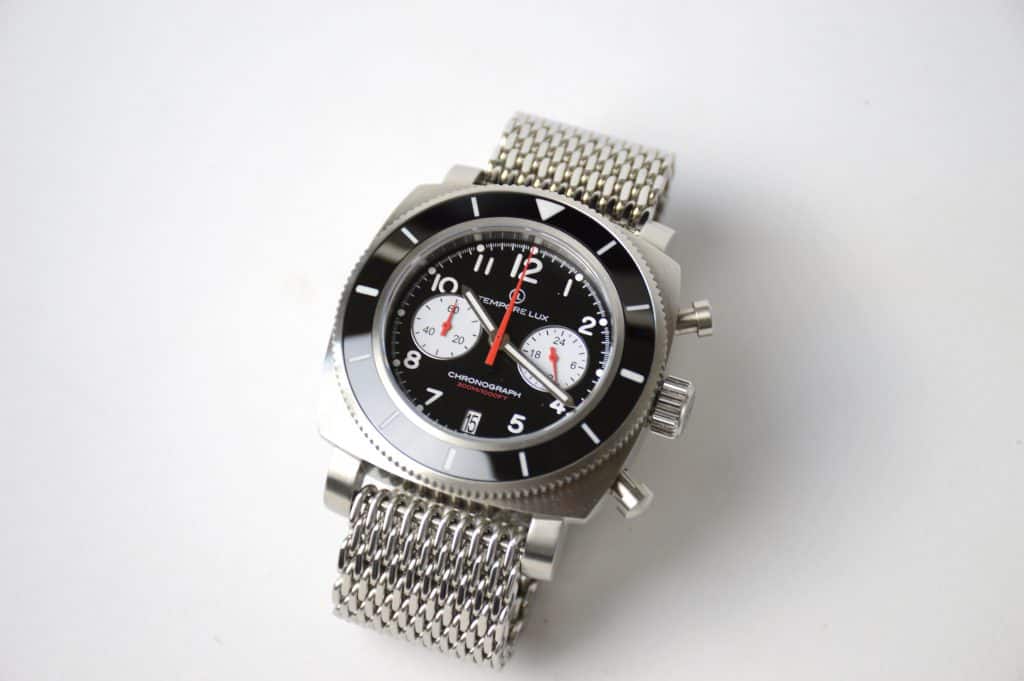
If you have a diver’s watch, for instance, the bezel is most likely to be unidirectional.
This type of bezel allows users to track the time spent underwater easily.
The bezel is the only component that helps you manage your oxygen supply underwater for most divers watch.
You may spot a bezel with a pulsometer, a tachymeter, a decimeter, or even a telemeter in advanced diver watches.
Hands
While the hands of a watch may look like a pretty ubiquitous component in a timepiece, it is unarguably one of the most crucial components you’ll find in a watch.
And that’s because it helps you read the time without any hassle.
In a typical watch, you’ll find two hands.
The first-hand displays the hour while the other hand showcases the minutes.
And before we forget, let us also add that there is a third hand.
This particular hand runs continuously and allows you to know exactly how many seconds have passed.
With the seconds’ hand, you can track time more accurately.
And just so you know, these hands come in different styles and shapes.
But regardless of their design, most watchmakers ensure that their hands are large enough to read the time without any hassle.
Watch Dial Parts
The dial of any timepiece is its body.
Ideally, the dial is the surface of the watch just underneath the glass/window.
This dial is usually accompanied by the hands that run through the annotated numerals.
While the dial of a timepiece can come in any color, most of the watches, we have come across feature a luminous dial.

In addition to their dial, most watches have luminous paints, especially on their numerals and hands.
This is intentionally designed to ensure that individuals can tell the time even in the dimmest of environments.
Other critical components of a watch
As we earlier mentioned at the start of this guide, we promised to cover the critical parts of a watch and some unimportant parts every watch owner should know.
Since we have sufficiently covered the essential elements of a timepiece, it’s time to scratch the surface by running you through some less critical timepiece components.
Even though these components are only optional to know, it won’t be such a bad idea to know a thing or two about these components.
Calendar
When it comes to calendars, you’ll most likely find two types of calendars in a timepiece.
While some watches feature a perpetual calendar, others come with a regular calendar.
The difference between a perpetual calendar and a regular one is that the perpetual calendar can mark leap years.
With this, you can expect your watch always to display the correct day and date.
On the flip side, the regular calendar must be tweaked every February as it cannot recognize leap years.
This will ensure it keeps displaying the correct date.
On most watches, you’ll spot the calendar function on the side of the timepiece.
Sure, there are some exceptions, but most timepieces have their calendar window at the 3 o’clock position.
Depth Alarm
You’ll most likely spot depth alarms on dive watches.
In some cases, you can see them in waterproof units.
Just like its name, this feature is pretty self-explanatory.
But for people who want to know what it is, it is a special alarm in dive watches that beeps when you reach a specific depth.
Like other watch functionalities, this feature can be tweaked to meet your preferences.
Sub Dials
If you have come across a timepiece that features a unique clock at the bottom of the display, then you have come across a sub-dial.
For high-end watches, you’ll notice up to 3 different clock faces.
And they aren’t for aesthetics.
This brilliant watch component is mainly designed to allow watch wearers to stay up to date with the time in other time zones.
Dual time
The dual time component is a very close counterpart of the subdials.
This functionality reads time in other time zones digitally.
In most watches with this feature, you’ll most likely spot it at the 3 o’clock position.
Tachymeter
You’ll need to do a little bit of math to use the tachymeter of any timepiece.
This watch component usually sits around the bezel.
On some rare occasions, you’ll spot the tachymeter around the sides of the display.
The tachymeter is a brilliant component that allows users to track their speed between two points.
While the tachymeter gives you a set of readings, you’ll need a calculator close by to interpret what that figure is in terms of speed.
Helium Valve
A helium valve is a vital watch component that comes alive when diving.
For divers who spend a long time underwater, resurfacing can be pretty dangerous especially considering the amount of gasses trapped inside the watch.
But thanks to components like the helium valve, you can quickly release trapped gasses within your wristwatch.
Since the helium valve is fitted inside a watch, you have to release it using a switch that mostly sits on the side of the device.
Most times, it is very close to the crown and comes marked with a label.
Power Reserve
In the course of putting together this post, we briefly spoke about automatic watches and self-winding.
To know how long before you can wound the watch, most mechanical watches come with a power reserve indicator.
For most automatic watches, you’ll see a power reserve between 35-40 hours.
While this is a pretty important feature, not many automatic timepieces have the power reserve feature annotated on their displays.
In some automatic watches, you may spot the power reserve indicator annotated at the 6 o’clock position.
Instead of reading from 0-40, the power reserve looks more like the typical gas level reading you’ll find in cars.
Jewels
Jewels mostly come with automatic watches and before you leap for joy, let us tell you right away that you’ll not find them on all wristwatches.
Jewels are an integral watch component as they are carefully designed to allow gears in automatic watches to move as smoothly as possible.
Usually, you’ll find more jewels in high-end watches.
While some high-end watches use genuine jewels, most automatic watchmakers prefer synthetic jewels as they are a lot cheaper.
Grande Sonnerie
You’ll most likely spot this feature in mechanical watches, and to be honest, it is a pretty exciting feature anyone would love to have in their timepiece.
For starters, the Grande Sonnerie is designed to improve a watch’s functionality.
For instance, whenever a quarter of an hour is reached, the grand Sonnerie will make a little gong sound.
Let’s say the grand Sonnerie makes a sound at 6:45; it will make six minimal sounds to indicate it was 6.
It could also strike at 8:15, making eight quiet sounds to indicate it’s 8.
Minute repeater
A minute repeater works very similarly to the Grande Sonnerie.
The only difference between the two is that the minute repeater works with the push of a button.
This means it doesn’t function automatically like the Grande Sonnerie.
AM/PM Indicator
This indicator you can instantly notice on the dial is mainly referred to as the day/night indicator.
Using this component, watch wearers can tell what time of the day it is as it mainly displays the image of the sun and the moon.
This incredible component is beneficial in a dual-timezone watch.
With this type of timepiece, you can quickly tell the time difference between different timezones.
In some exceptional timepieces, you’ll spot a 24-hour movement, where the hour hand is designed to rotate once per day.
If you have come across a vintage WWII Bulova watch, you’ll understand exactly what we mean.
Moon Phase
The moon phase complication is an outstanding component that was super popular when it was in vogue.
This component is usually found in a unique window on the face of a dial.
For those who have no idea about moon phase complications, this brilliant component shows the waxing and waning of the moon as it makes its way around the earth.
With this functionality, you’ll be able to tell the different phases of the moon as it is in the sky by simply glancing at your timepiece.
Frequently asked questions
What are the insides of a timepiece called?
The inside of a timepiece is mainly called the movement.
Usually, the movement- the inner components of a unit can either be quartz-powered or mechanical.
While some manufacturers prefer to call the inside of their watches movements, some watchmakers prefer to call their movements calibers.
Additionally, a watch’s inner components comprise a gear train, a mainspring, a balance wheel, and an escapement.
How many parts are generally in a watch?
In a simple mechanical watch, you’ll most likely find nearly 130 components.
On the other hand, more complex watches have hundreds of parts.
For instance, the Calibre 89 timepiece from the stables of Patek Phillipe has over 1728.
And in case you don’t know, this is unarguably one of the most complex watches ever to grace the watch scene.
What do you call the winder on a watch?
The winder you’ll typically find on the side of the casing of any watch is called the crown.
This is usually put in place to adjust the hands, date window, and any other functionality.
In a typical automatic unit, the crown performs an extraordinary role, especially if the watch is a self-winding one.
Conclusion
When it comes to a watch’s component, many mechanisms make up the anatomy of a typical timepiece.
Today, we have covered most of them, making it very easy for any watch wearer to identify the different parts of their watch along with their functionality.
Knowing a thing or two about your watch’s components will help you appreciate the efforts put into building these devices.
- Which Wrist to Wear a Watch – Updated Guide 2024
- How To Wear A Watch – Definitive Tips Guide 2024
- How Loose Should a Watch Be – Updated Guide 2024
- How to Tell Time on a Watch – Updated Guide 2024
- How to Measure Your Wrist for a Watch – The Updated Guide
- How To Use a Watch as a Compass
- What is a Hybrid Watch?

